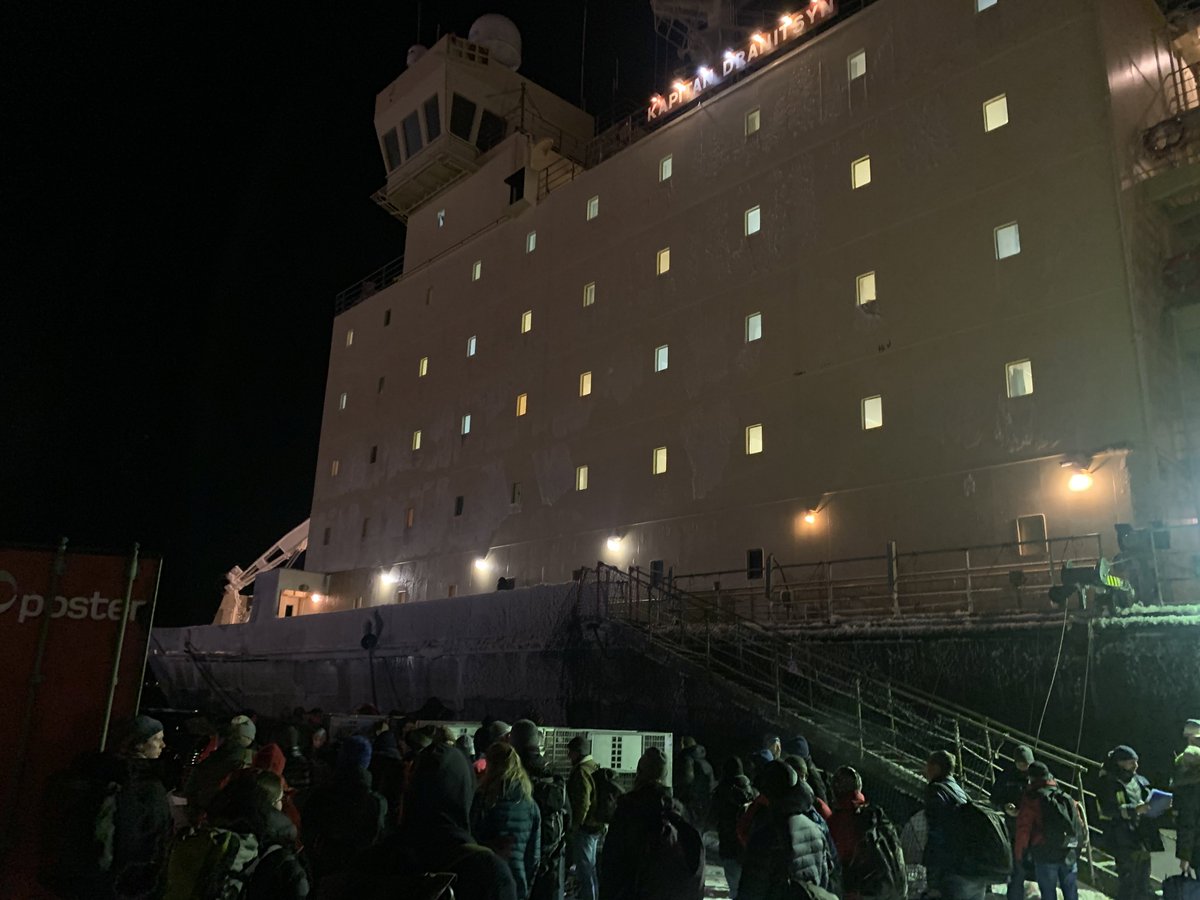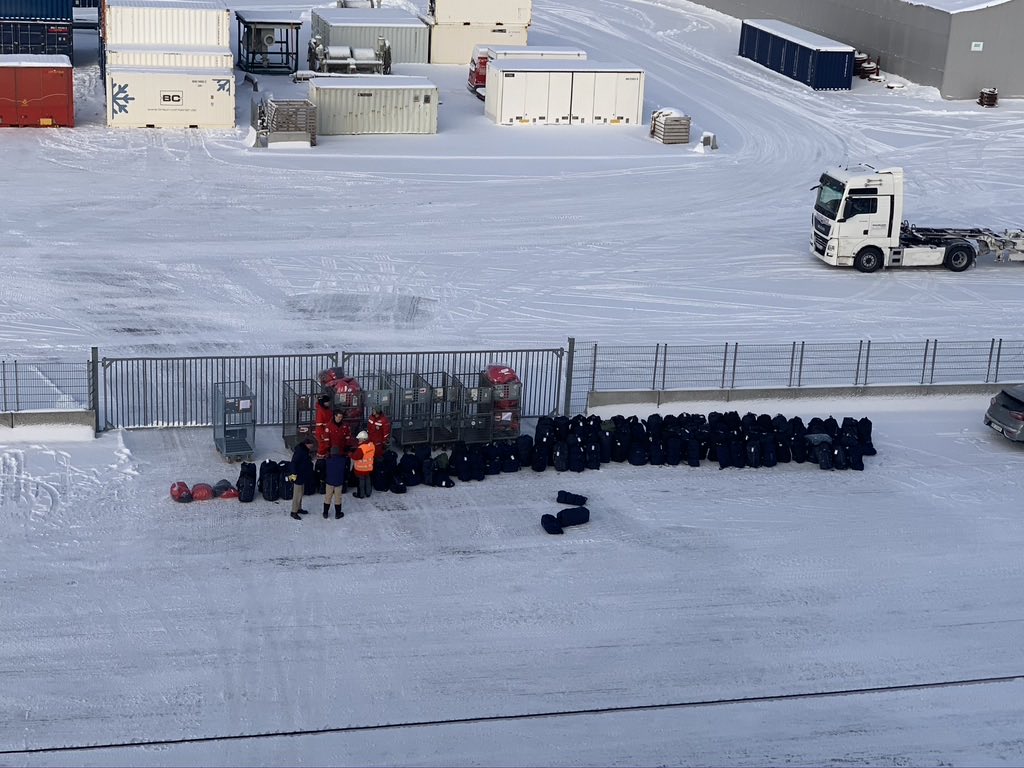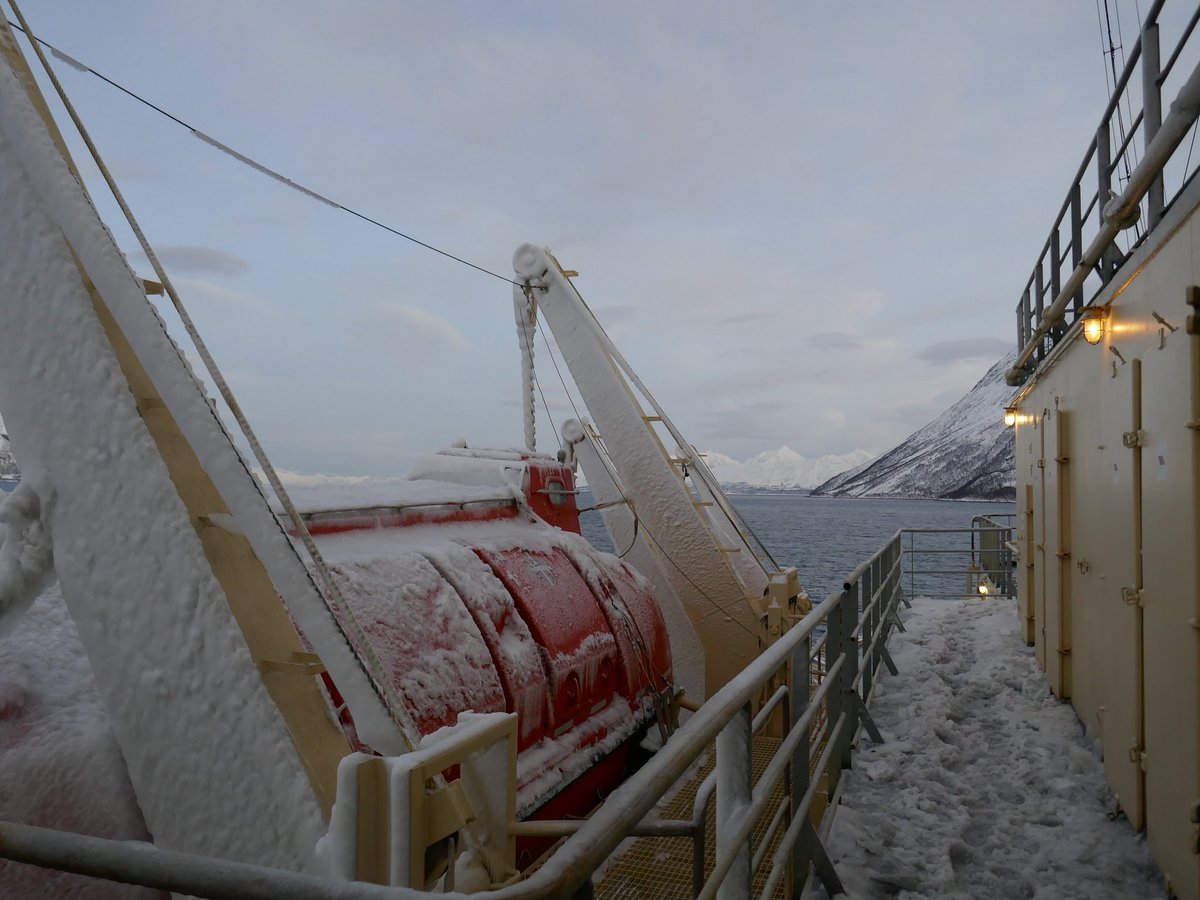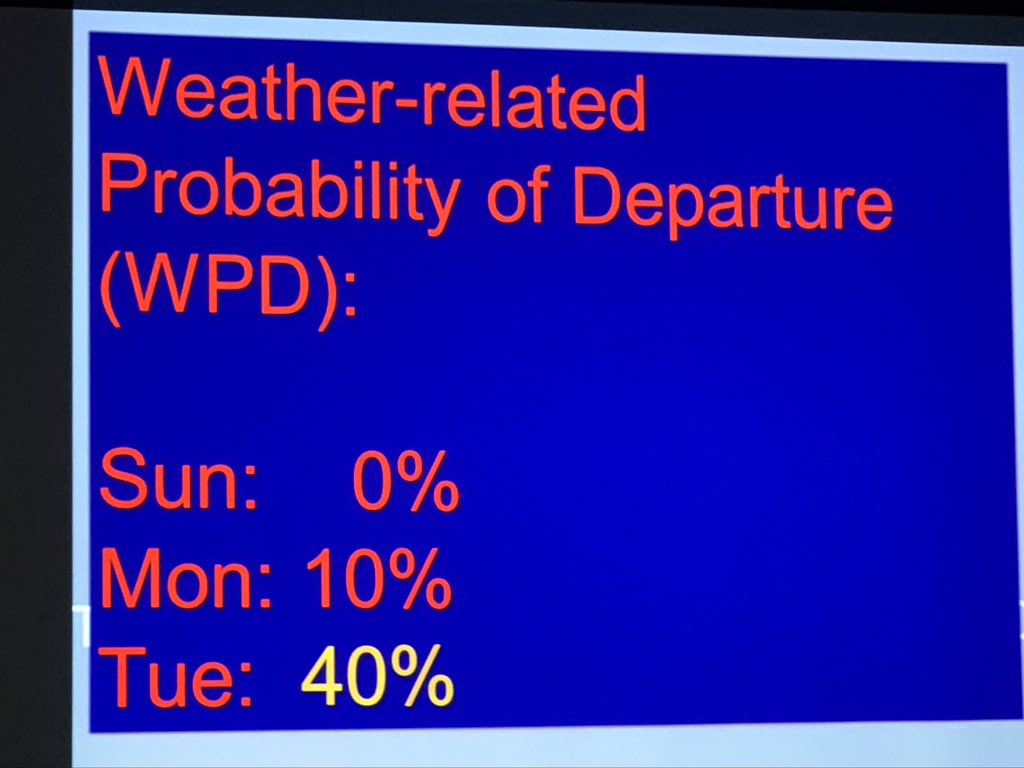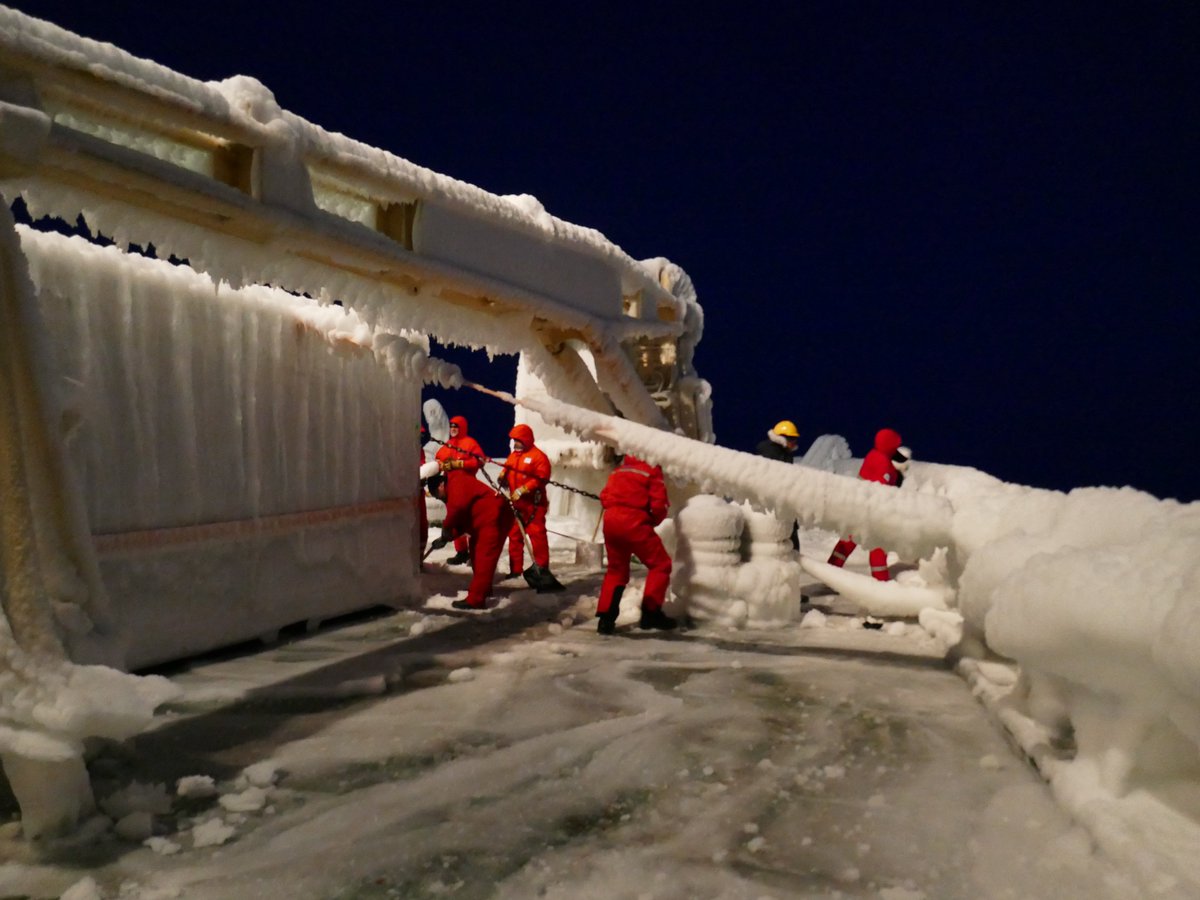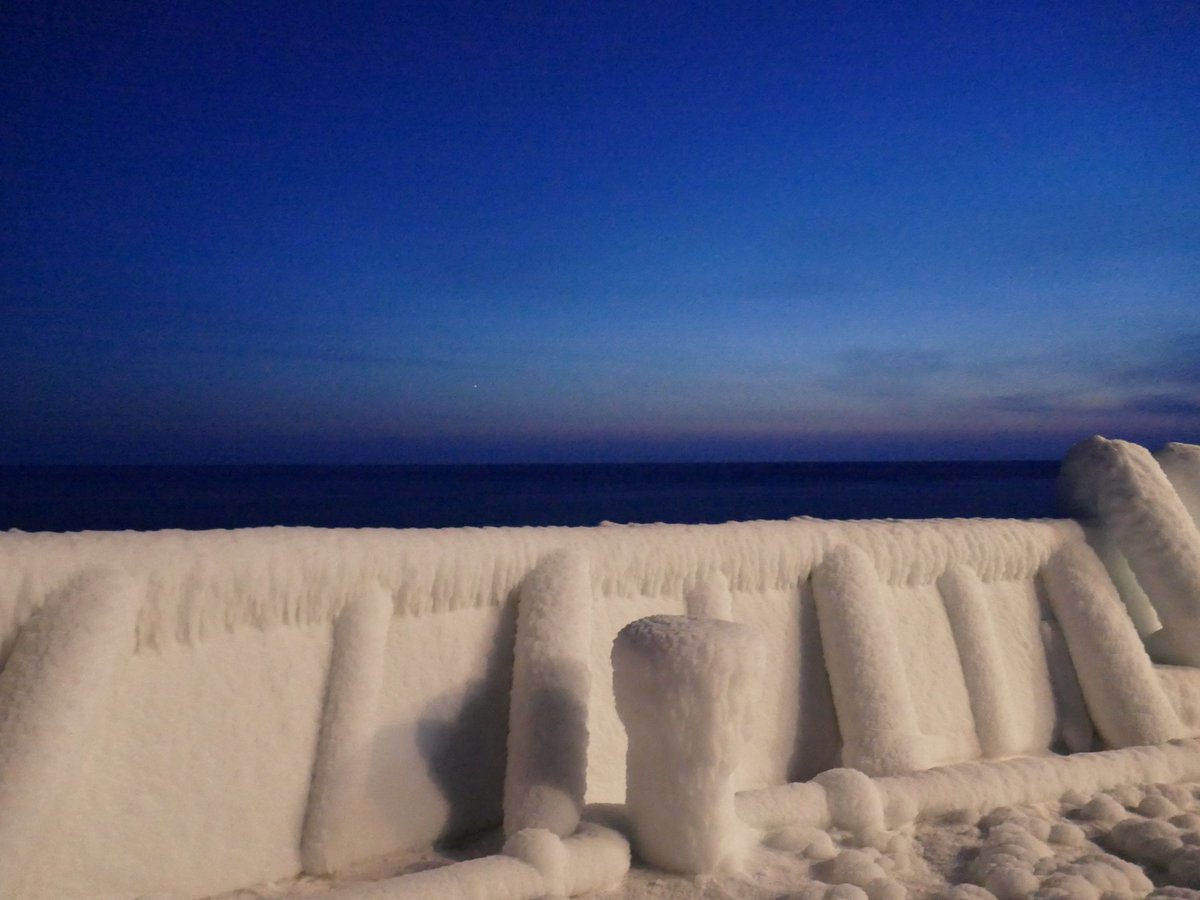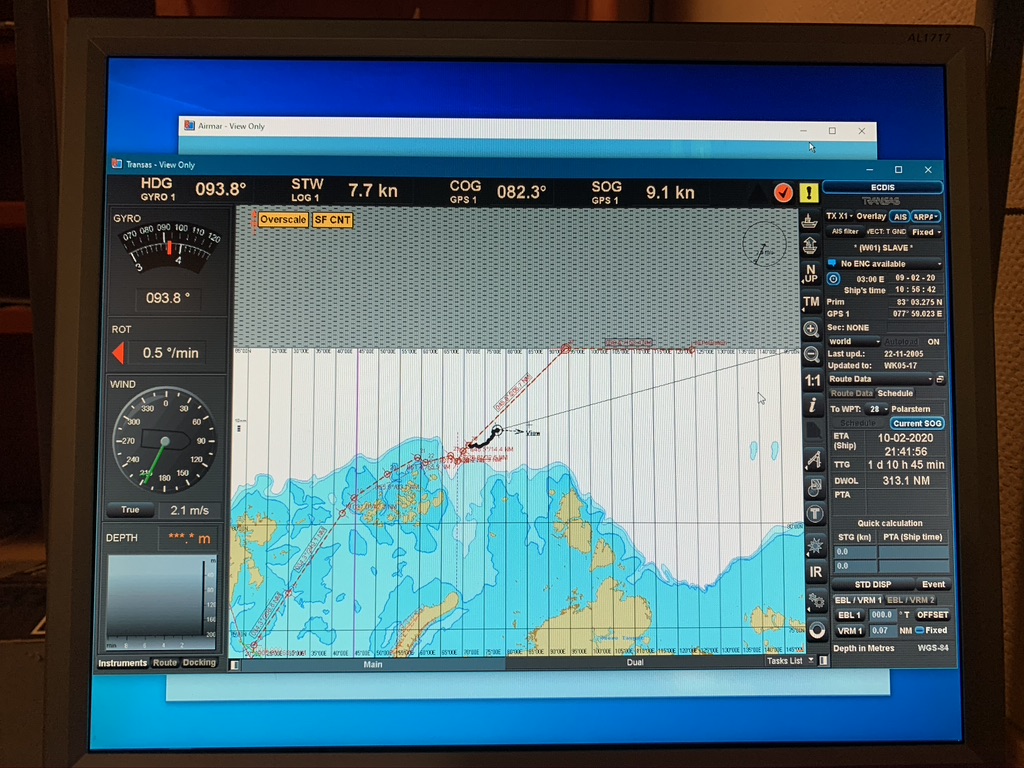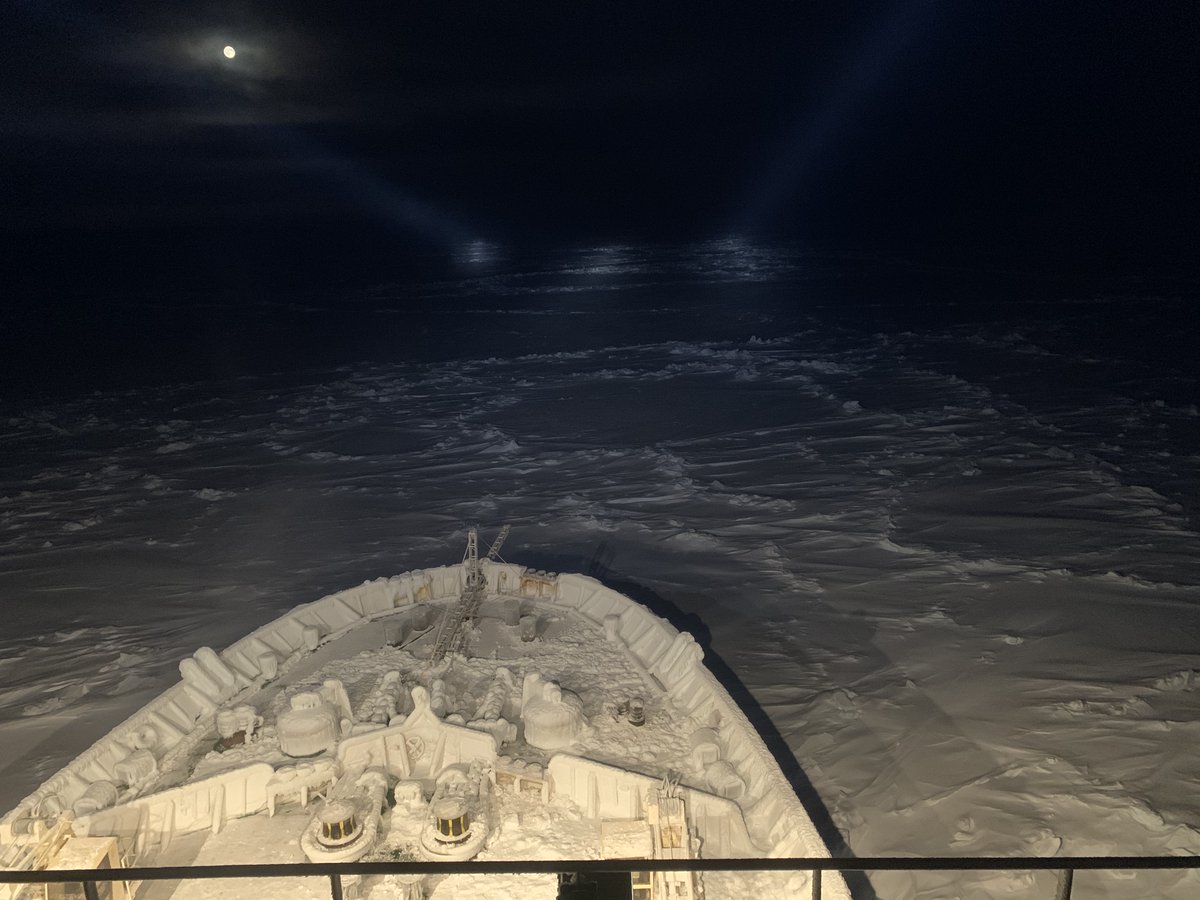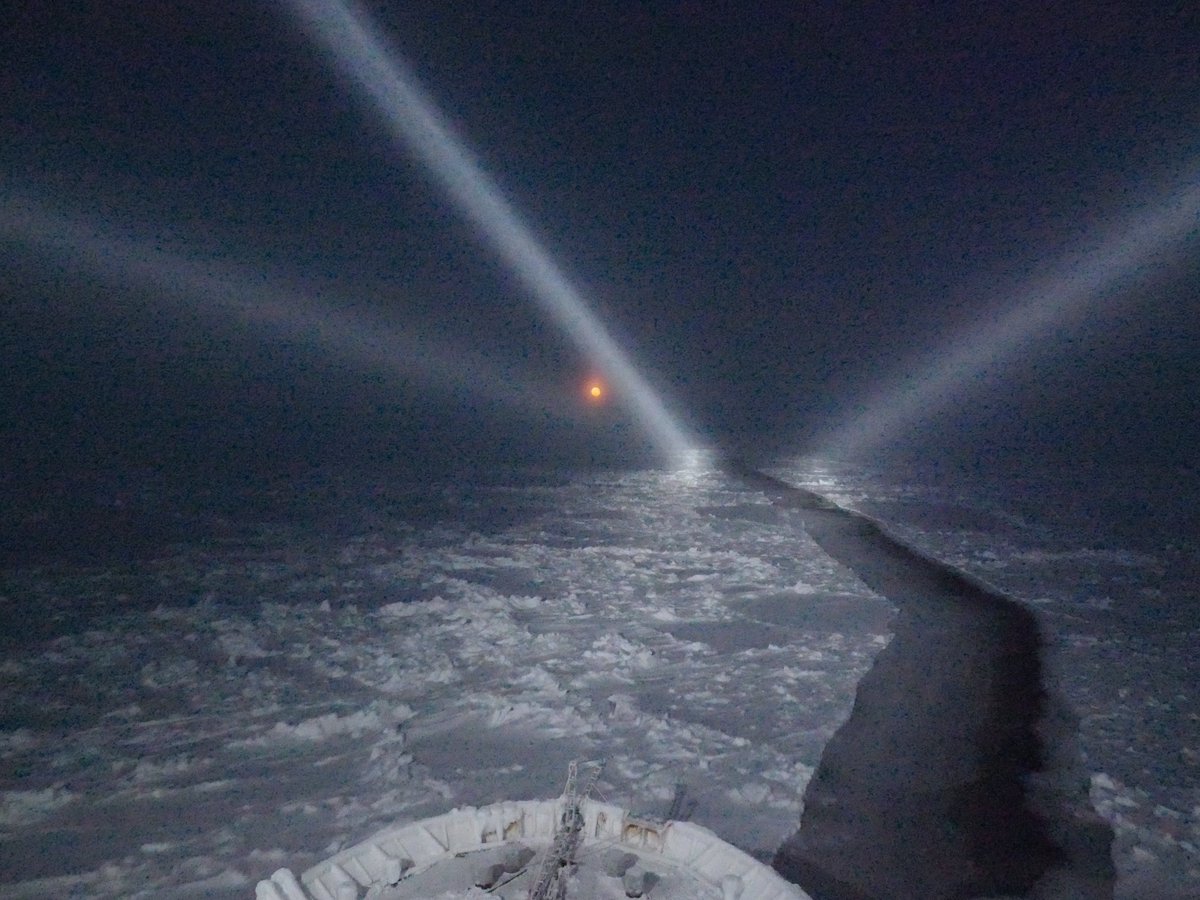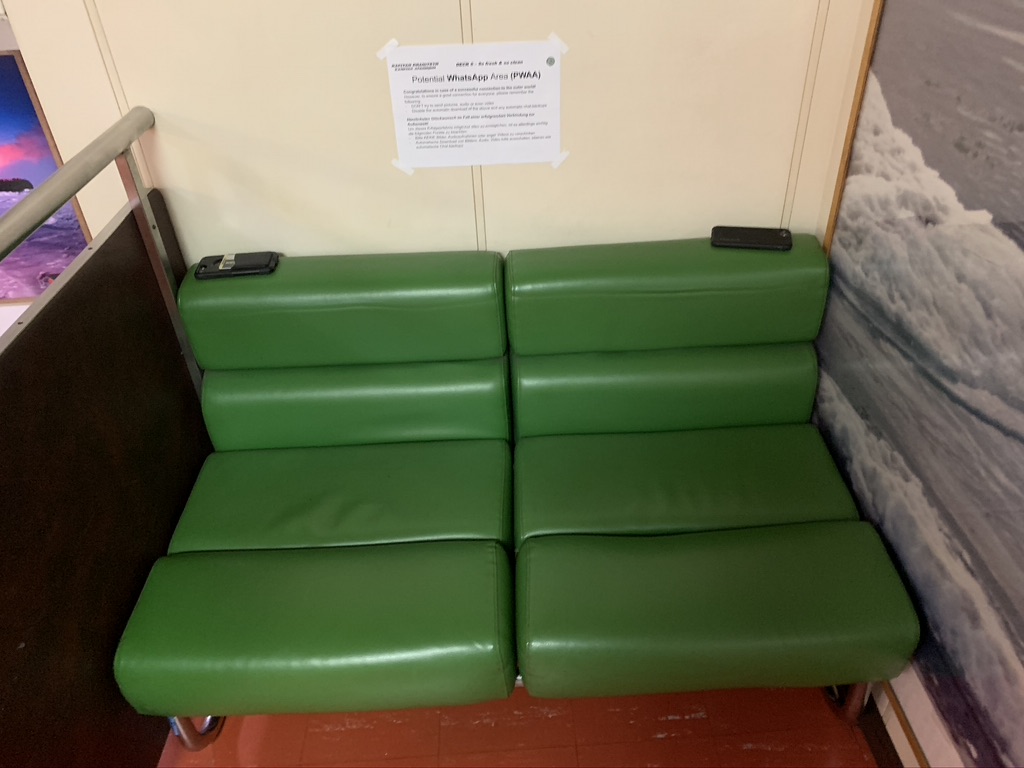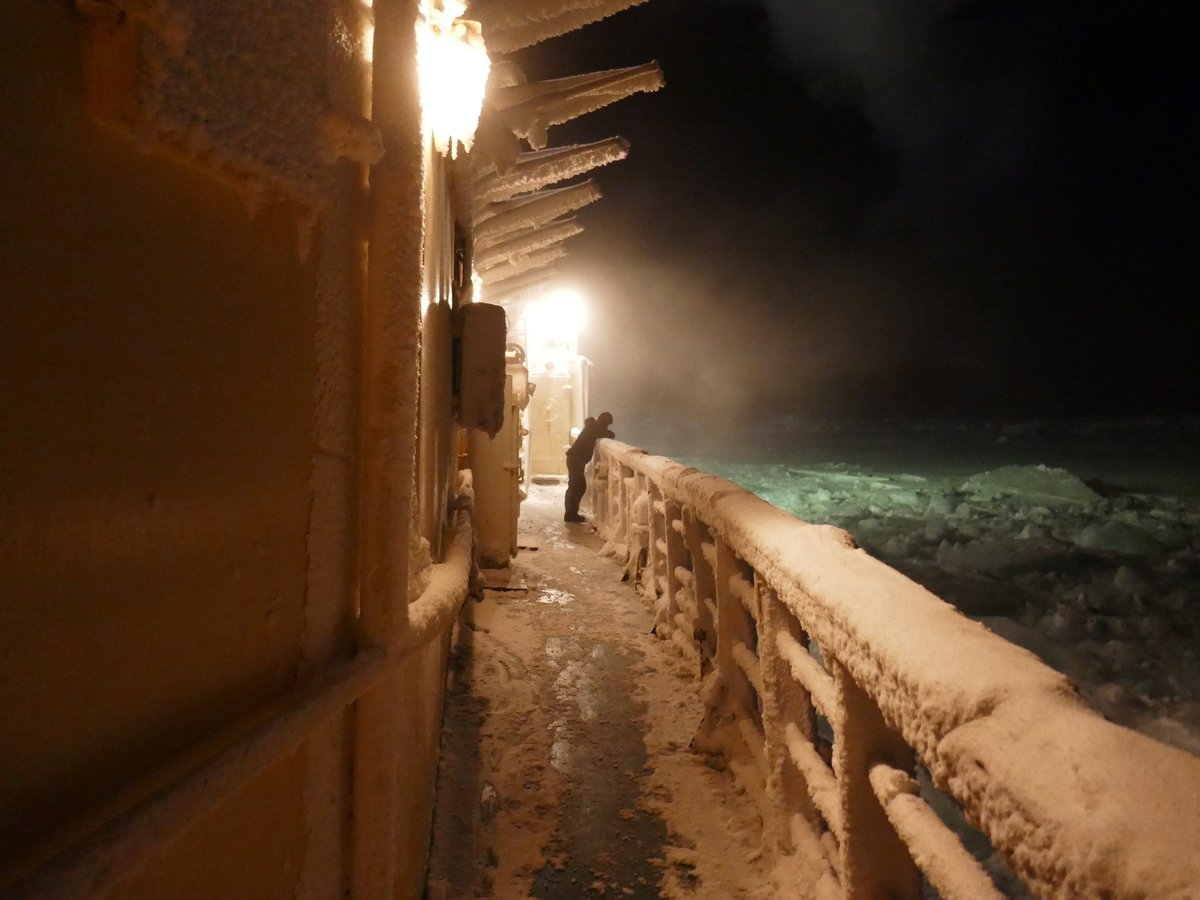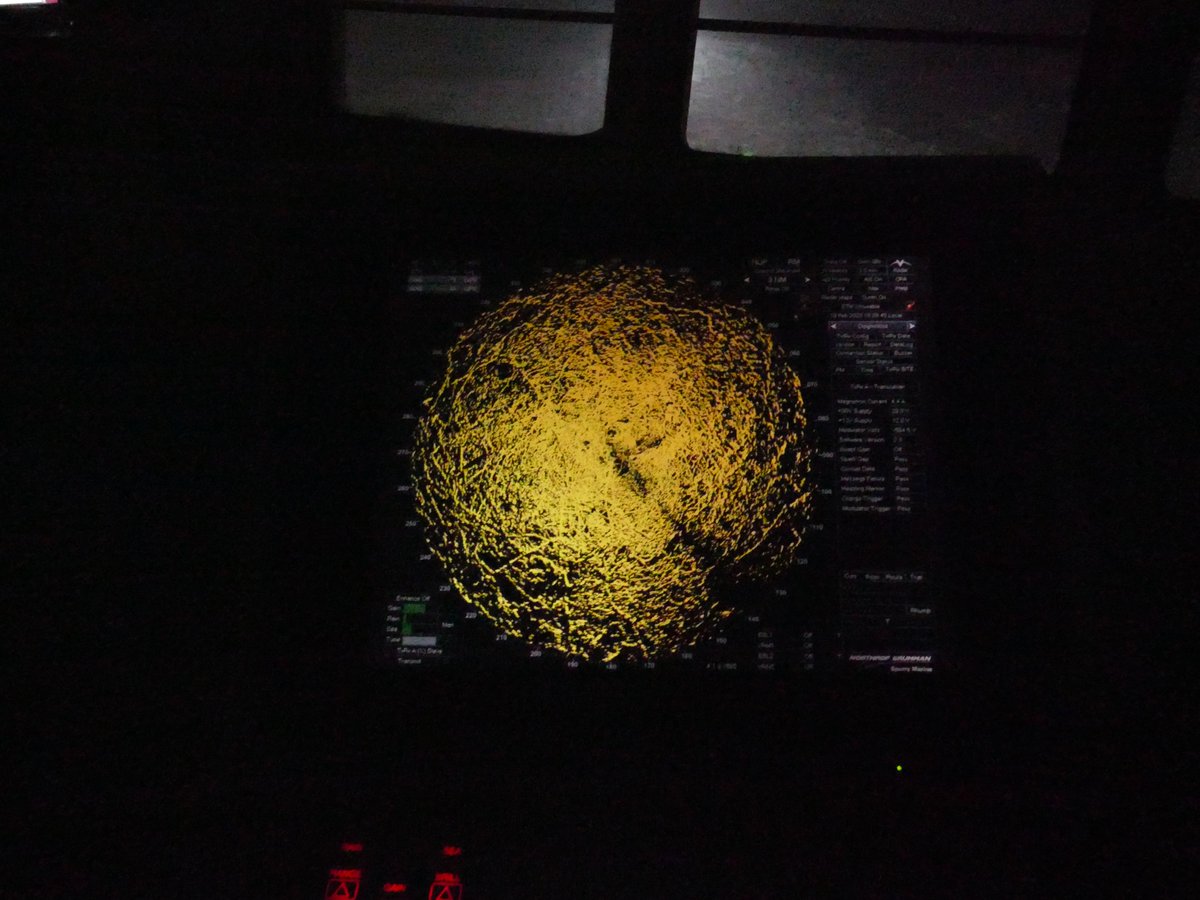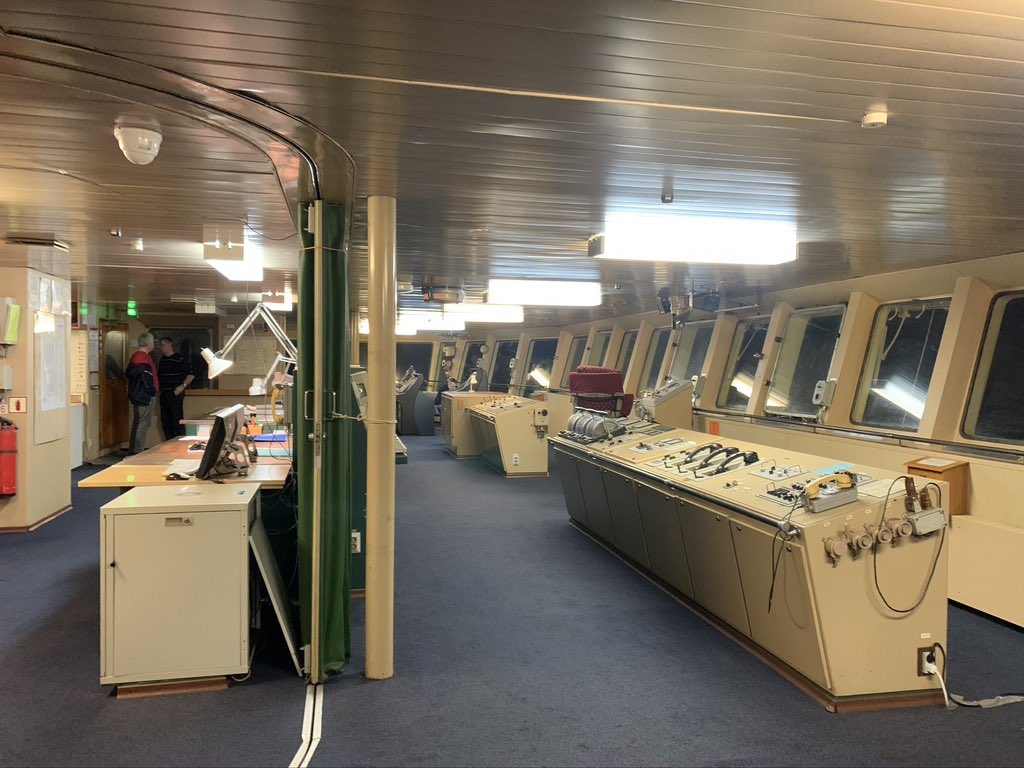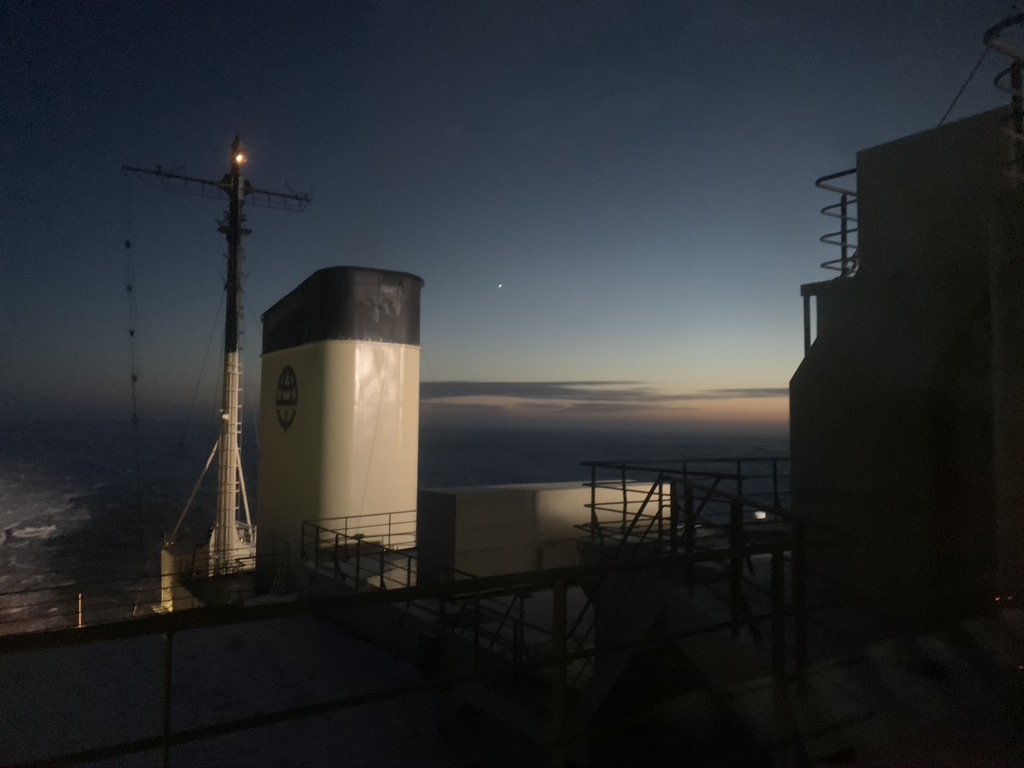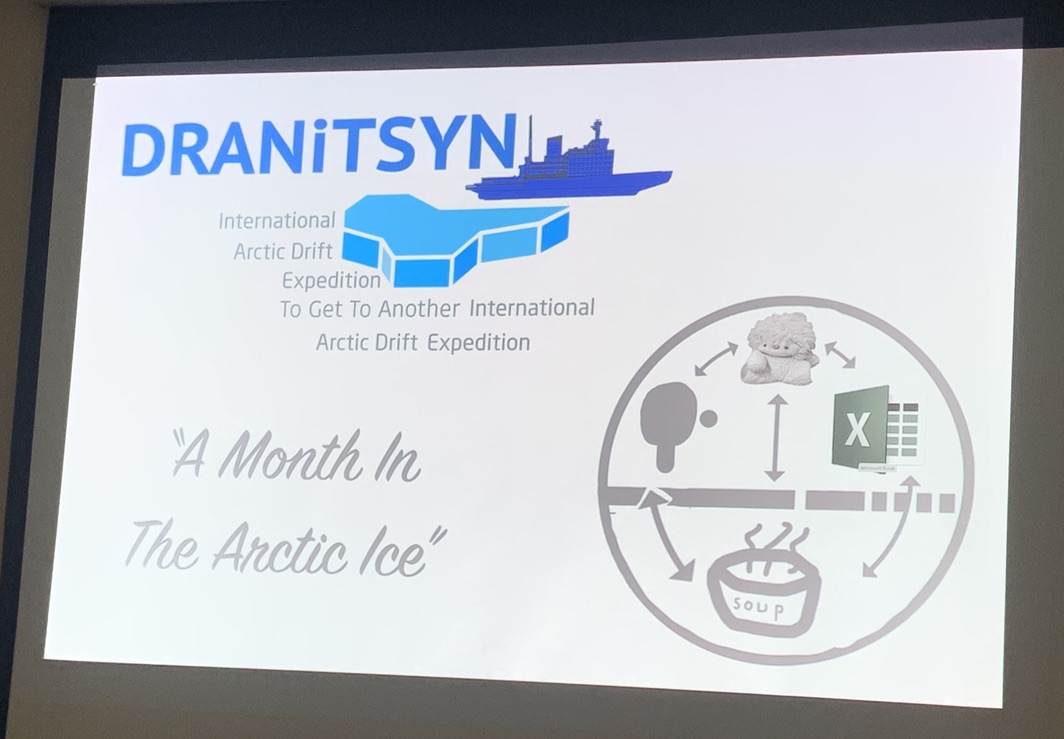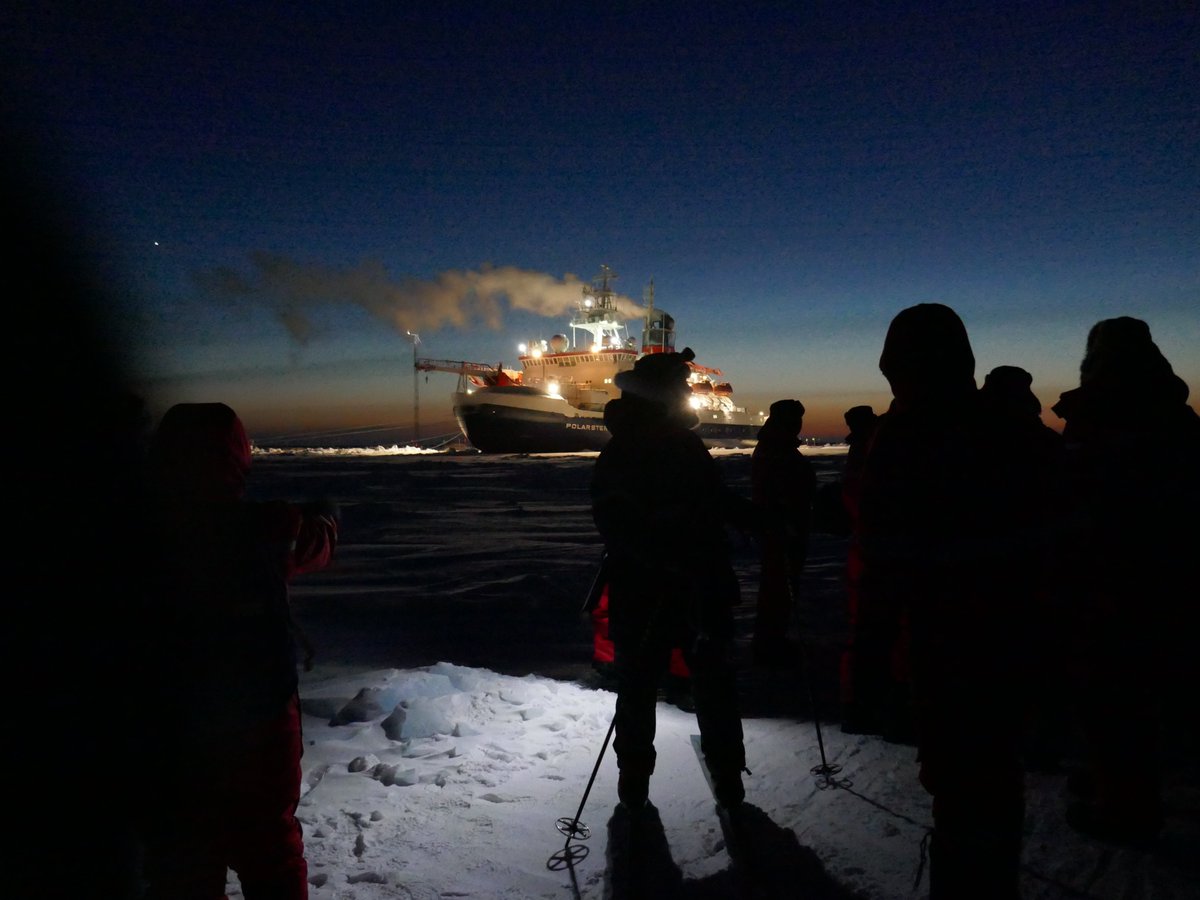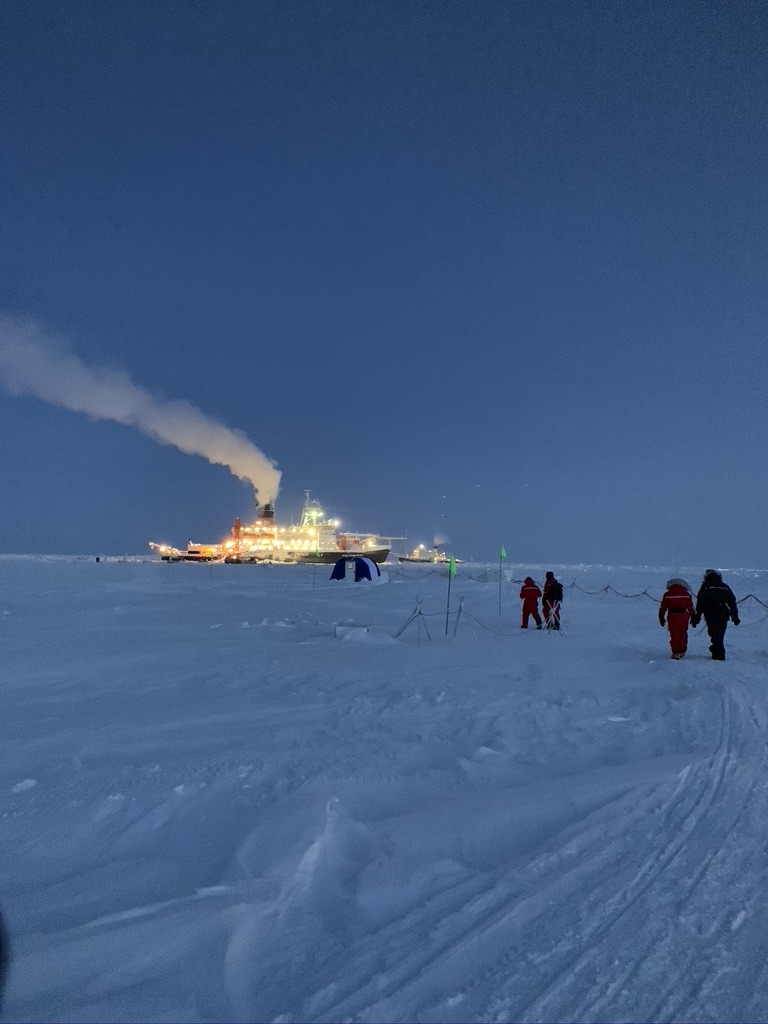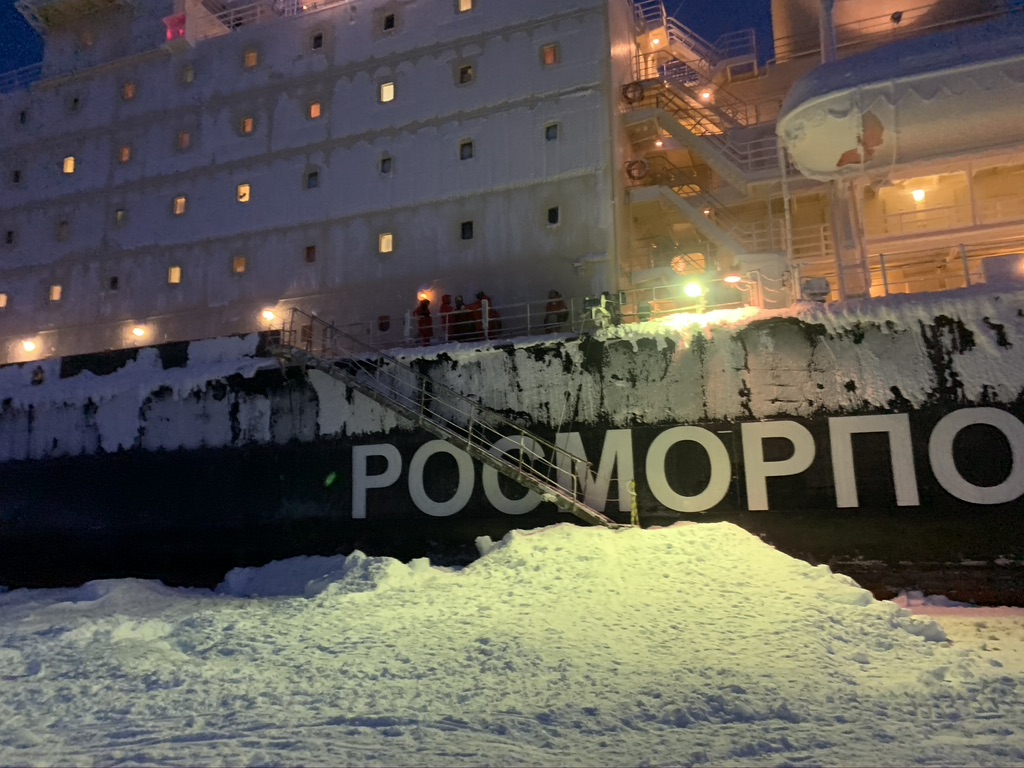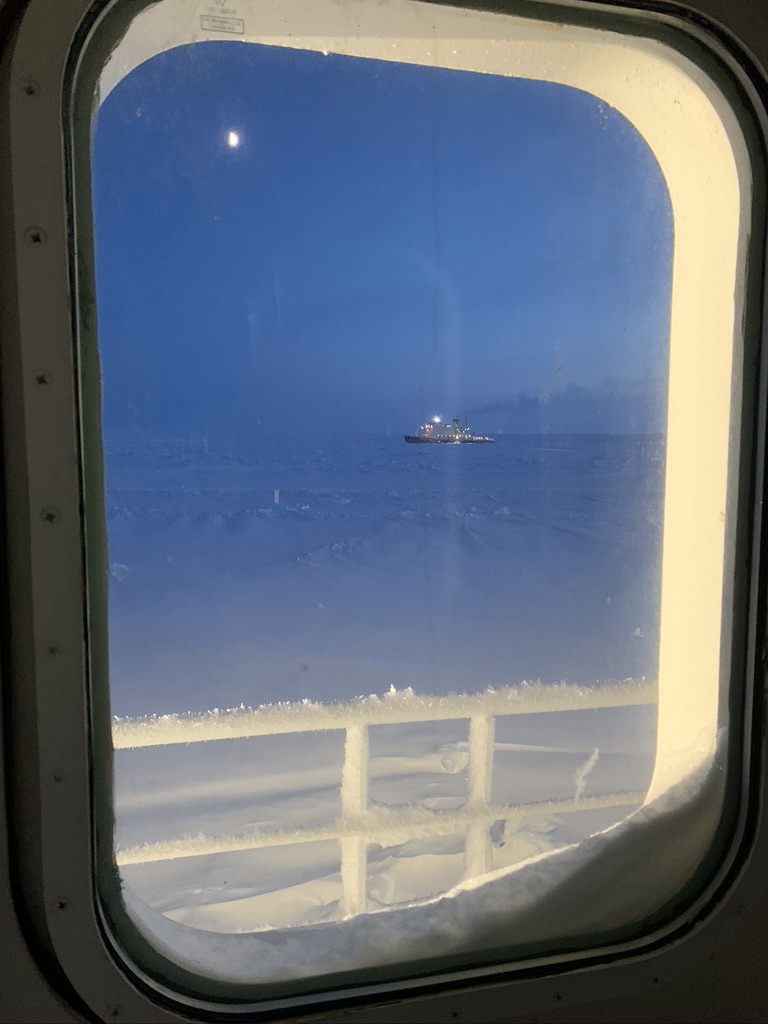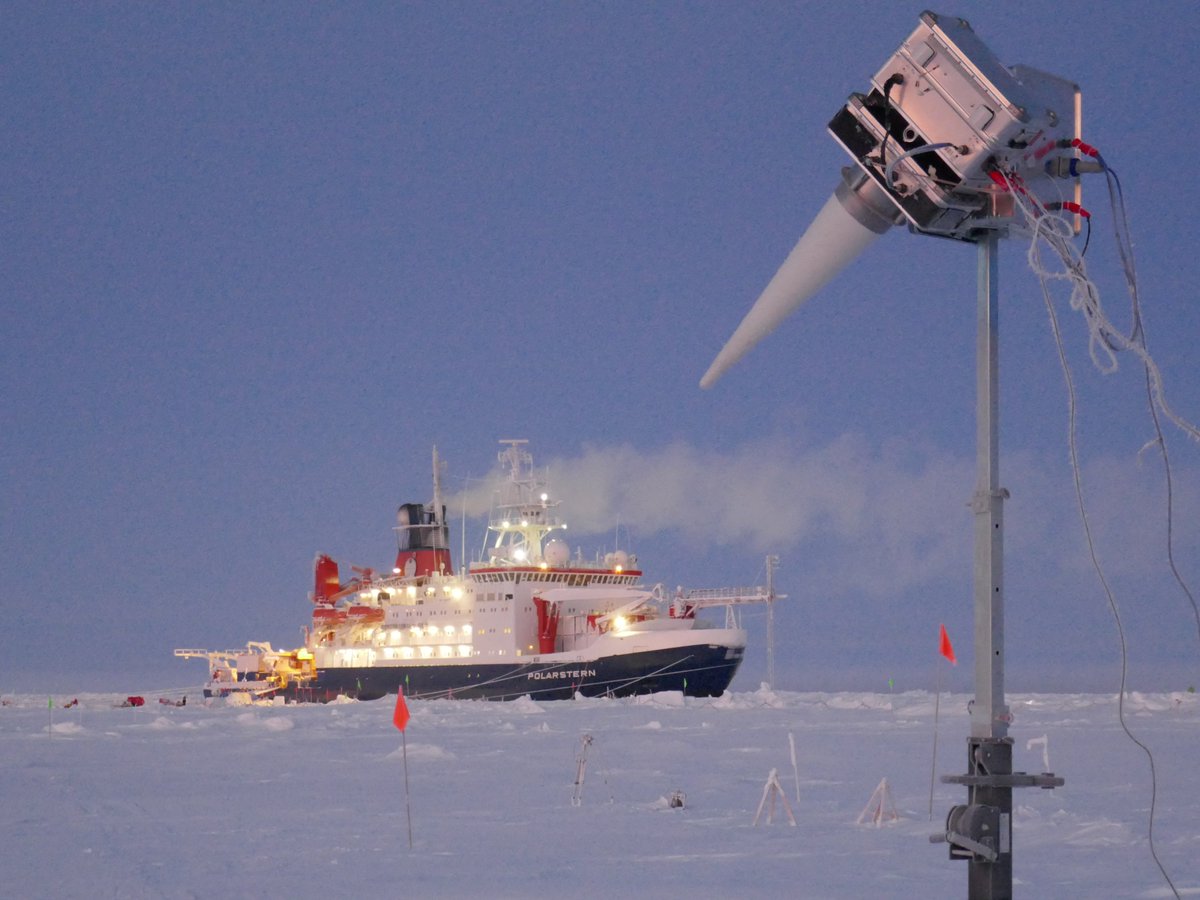Six months ago we boarded the Russian icebreaker Kapitan Dranitsyn for leg 3 of @MOSAiCArctic not knowing what was to come.
Boarding was not entirely completed on January 28, @MOSAiCArctic leg 3 became a story of delays. While we were waiting to get our polar gear, my mailbox received an information about restrictions of work-related travel to China due to the coronavirus, and sent a vacation message.
On January 29 the Russian icebreaker Kapitan Dranitsyn left the harbor of Tromsø heading towards the German R/V Polarstern. This became an unprecedented journey close to the North Pole during Arctic Winter.
On January 30 we stayed in the fjord of Tromsø waiting for better wind and wave conditions to cross the Barents Sea.
February 1 (Saturday), still waiting for a good weather window to cross the Barents Sea. Thanks for the always excellent on-board service from @DWD_presse
Last minute supplies arrive on February 3rd before we leave the fjord towards Barents Sea. The last option for a call or internet over a fast cellular connection for the next few months.
February 4, crossing Barents Sea. I  https://abs.twimg.com/emoji/v2/... draggable="false" alt="❤️" title="Rotes Herz" aria-label="Emoji: Rotes Herz"> dimenhydrinate
https://abs.twimg.com/emoji/v2/... draggable="false" alt="❤️" title="Rotes Herz" aria-label="Emoji: Rotes Herz"> dimenhydrinate
On February 5 Kapitan Dranitsyn went into the marginal ice zone close to Svalbard.
February 6. The provisions for the next few months are essential. Therefore, the frozen container on the foredeck must be carefully de-iced.
February 7, de-icing in progress.
February 9. The ECDIS shows our position. We passed north of Franz Josef Land and are now at about 83°N 78°E.
Evening of February 9, view from the bridge. The ice is getting thicker and we are slowing down.
February 10, we& #39;re stuck in compressed ice.
February 11, travelling through cracks and leads towards the red moon. Tidally-induced motion is an important aspect of navigation through the ice.
February 12, going through sea ice leads at 84.4° N, 81.4° E, now 200 miles distance to R/V Polarstern. It is planned to arrive there about mid-February. Then we would have 6 weeks for science and fly out early April. My flight back home from Svalbard is booked for April 5th.
February 13, the "Potential WhatsApp Area" in the stairwell is our small WIFI window to the world. Text only messages may be exchanged over the Iridium link when you stay a while or leave your phone. Sometimes it works, sometimes not.
February 14, view from the deck. Progress is slow through the compact ice. At -30°C my camera battery only lasts for a maximum of 2-3 minutes.
February 15, Kapitan Dranitsyn at 85.4°N, 86.2°E, distance to Polarstern 157 nautical miles. Rumors about fuel shortage.
February 16, the Russian Borschtsch is always delicious.
February 17, Kapitan Dranitsyn at 85.8°N, 88.4°E, Polarstern at 88.1°N, 78.8°E in 134 nautical miles distance. How close can we get?
February 18, cracks and leads in northly orientation are favourable for us. Pressure ridges slow us down considerably.
February 19, the nautical radar shows the ridged sea ice 3 miles around us. About 3000 miles away a fateful Champions League match takes place. Atalanta Bergamo plays against FC Valencia, 2500 fans travel back to Spain and cause the massive spread of coronavirus.
Feb. 20, Kapitan Dranitsyn at 86.8°N, 88.6°E, Polarstern at 88.4°N, 68.9°E, still 106 miles away. Machines were off a few hours to save fuel. We& #39;re discussing potential airborne exchange. Likely not all people and cargo could be transferred. Stressful prioritization discussions.
February 21, crossing 87°N latitude. Time lapse video from the bridge of Kapitan Dranitsyn.
February 23. A faint light comes back around noon. There is no weekend on board. We continue scientific discussions and preparations. Today we watch a documentary film about the AIDJEX experiment which I obtained from @NSIDC https://nsidc.org/data/g02183 ">https://nsidc.org/data/g021...
February 24, crossing 88°N. Finished reading John Kåre Raake "The Ice".
February 25, 88.1°N, 73°E, 42 miles away from Polarstern. How close can we get? Repacking gear, mainly heating pads, to fit personal weight limits for a potential airborne exchange.
February 26, Kapitan Dranitsyn at 88.4°N, 56°E.
The most beautiful ride through Arctic sea ice leads https://abs.twimg.com/emoji/v2/... draggable="false" alt="😍" title="Lächelndes Gesicht mit herzförmigen Augen" aria-label="Emoji: Lächelndes Gesicht mit herzförmigen Augen">
https://abs.twimg.com/emoji/v2/... draggable="false" alt="😍" title="Lächelndes Gesicht mit herzförmigen Augen" aria-label="Emoji: Lächelndes Gesicht mit herzförmigen Augen">
Wow! Truly amazing!
The most beautiful ride through Arctic sea ice leads
Wow! Truly amazing!
February 27, how fantastic is this to finally see the lights of R/V Polarstern after this long journey with the icebreaker Kapitan Dranitsyn close to the North Pole during polar night?
February 28, we arrived in walking distance! What a relief, we have not to leave anyone or anything behind. I do not know if such a ship-to-ship transfer has ever taken place before. At least not in the middle of the Arctic Ocean during Winter.
February 29, while doing the handover we have to commute between Kapitan Dranitsyn and Polarstern. A sleigh shuttle takes about 10 minutes. (video part 1)
February 29, while doing the handover we have to commute between Kapitan Dranitsyn and Polarstern. A sleigh shuttle takes about 10 minutes. (video part 2)
February 29, while doing the handover we have to commute between Kapitan Dranitsyn and Polarstern. A sleigh shuttle takes about 10 minutes. (video part 3)
March 1, during the handover we walked around the ice floe and visited the places where repeated measurements are made. The switch from polar night to polar day takes only a few days. The colleagues from leg 2 have seen these places only in the dark.
March 4, handover continues. An ultrawideband radiometer is looking at the sea ice and measures the thermally emitted radiation over the range of 0.5-2 GHz. This experiment will increase our basic knowledge for potential future satellite missions. DOI:10.1109/TGRS.2019.2922163
March 5, the last day of handover with our colleagues from leg 2. @RasmusTonboe explains the sea ice conditions around the remote sensing site.
March 6, departure of Dranitsyn on the ice radar. How long will it take for them to get home? Will we be back even earlier with the aircrafts? Leg 3 was supposed to be the shortest leg for the @MOSAiCExpedition. Much more to tell but not in this thread. @threadreaderapp unroll

 Read on Twitter
Read on Twitter